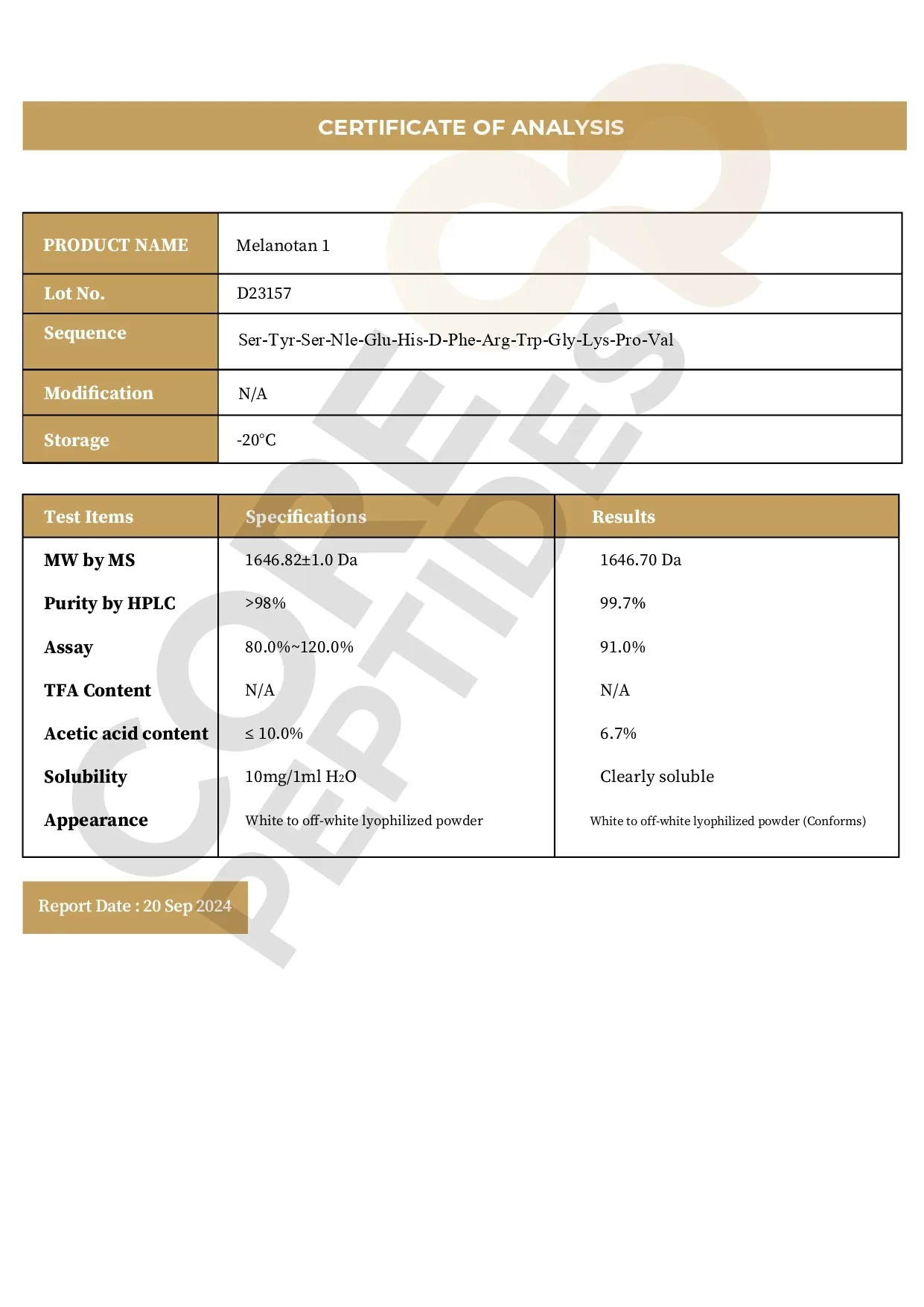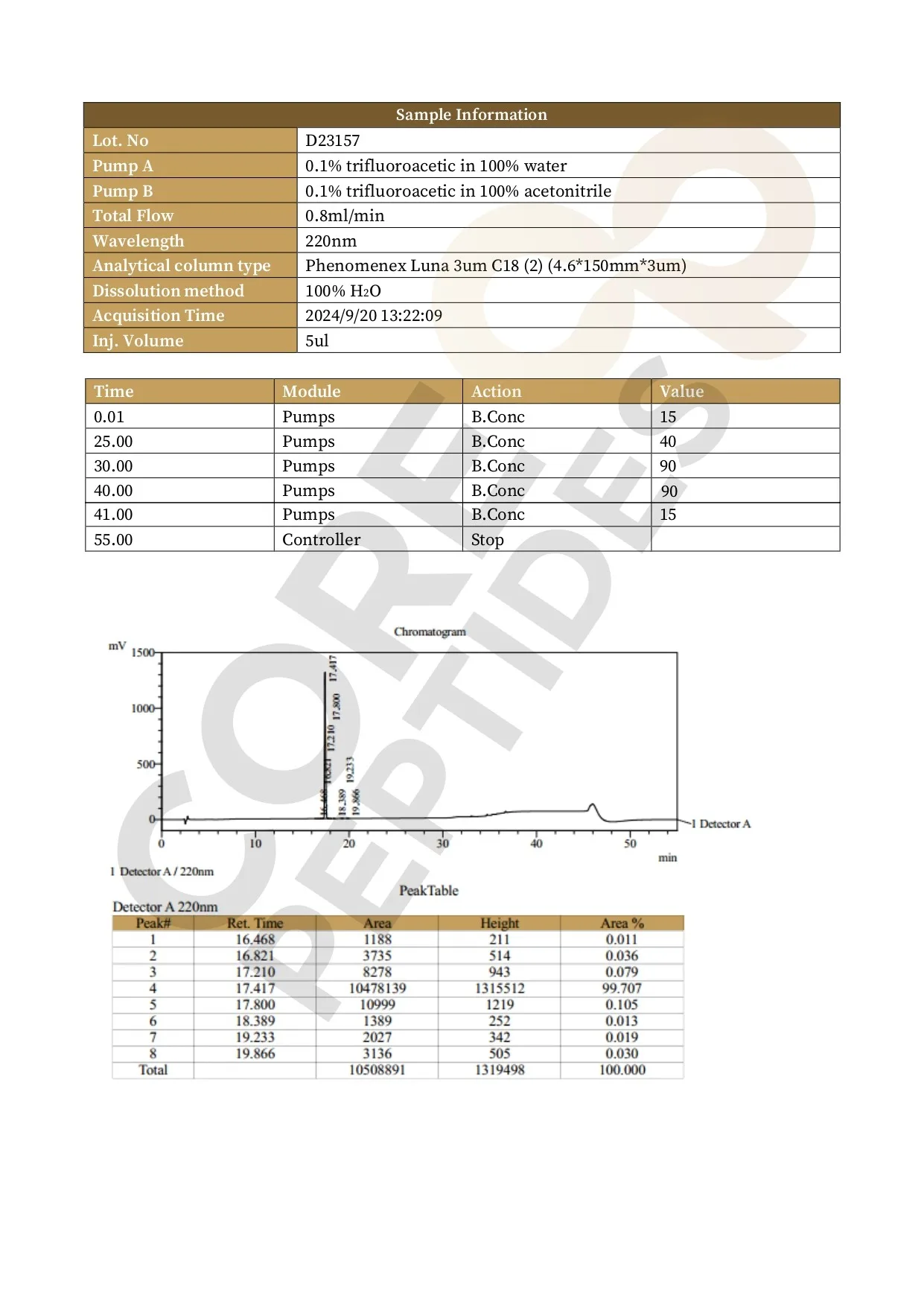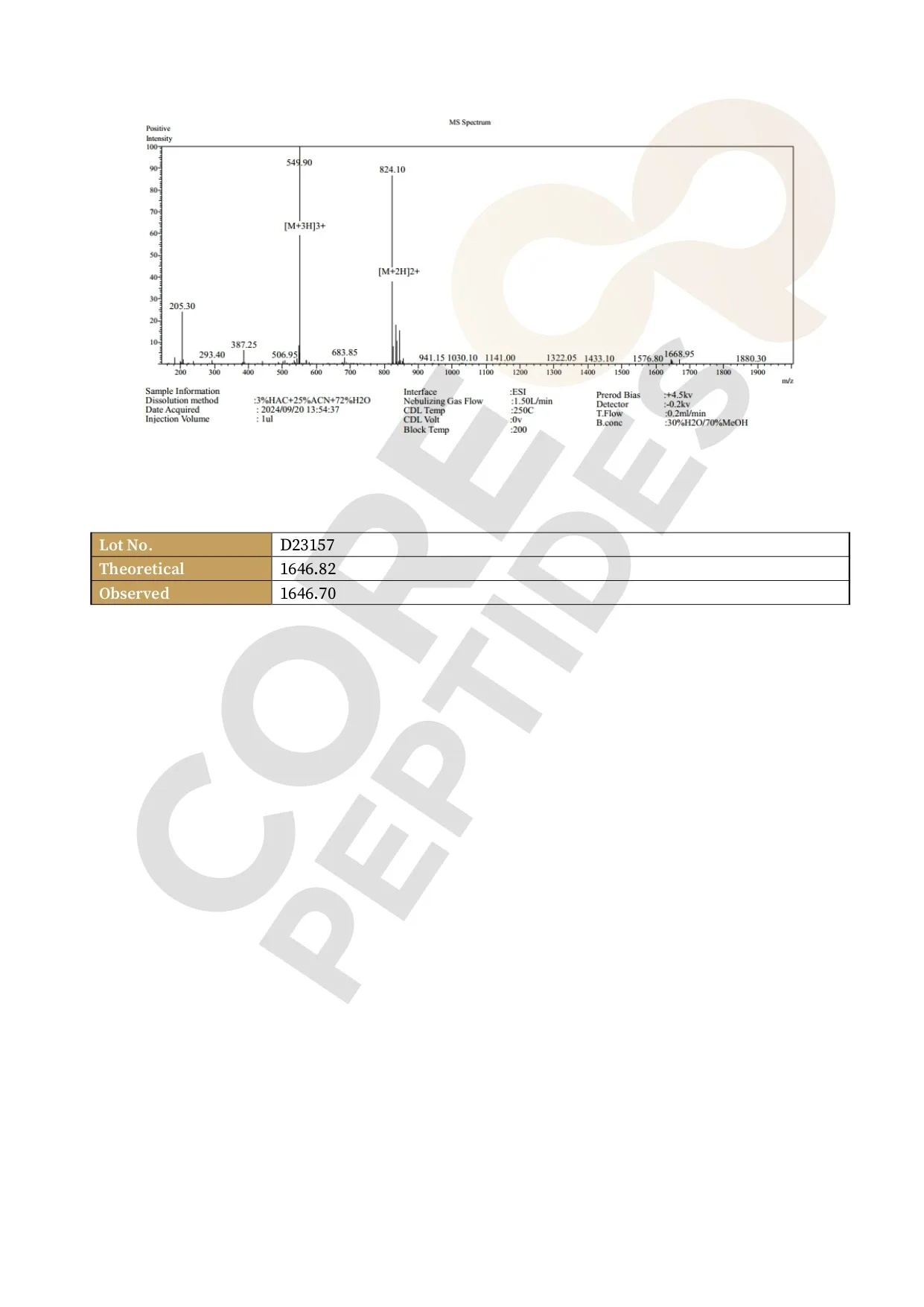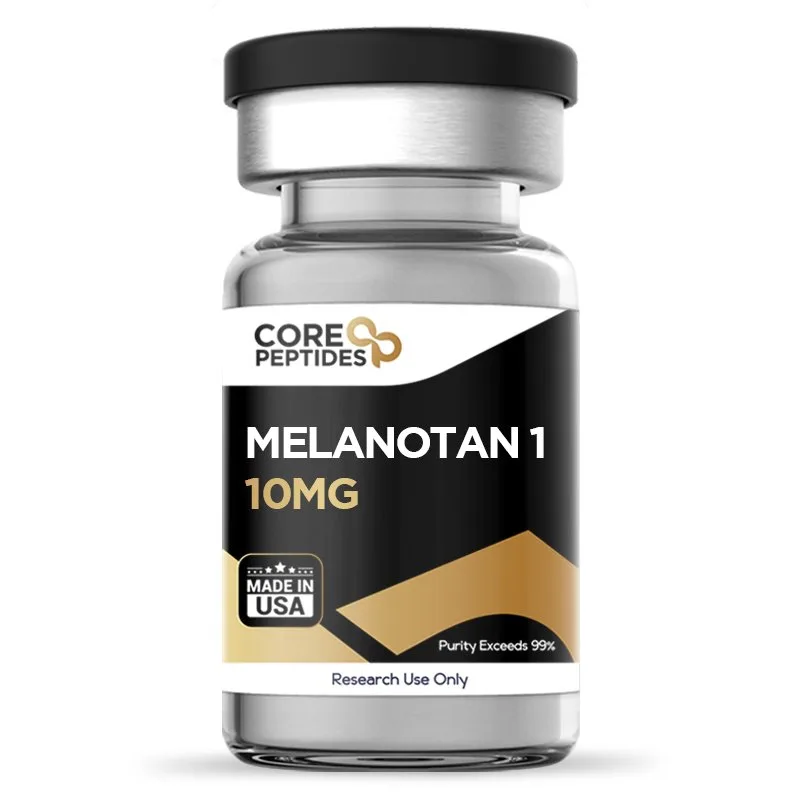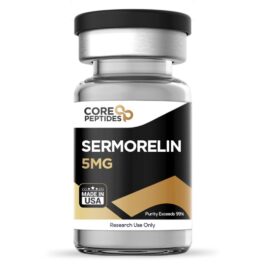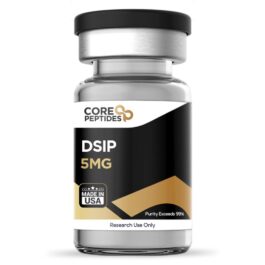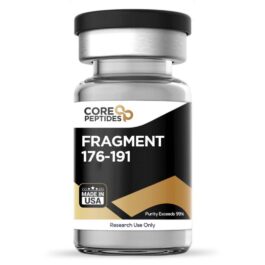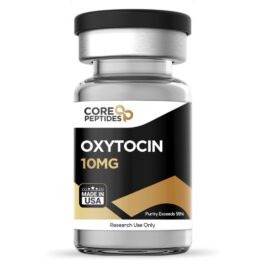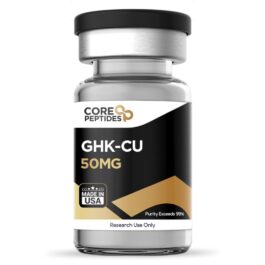Melanotan 1 (10mg)
$43.00
Size: 10mg
Contents: Melanotan 1 (10mg)
Form: Lyophilized powder
Purity: >99%
SKU: P-MELANTN1-10
FREE Shipping on $200+ orders
Discount per Quantity
| Quantity | Discount | Price |
|---|---|---|
| 5 - 8 | 5% | $40.85 |
| 9 + | 10% | $38.70 |
Melanotan 1 Peptide
Melanotan 1 is a synthetic peptide similar to the endogenous alpha-melanocyte stimulating hormone (α-MSH).(1) Melanotan 1 comprises 13 amino acids, the same as α-MSH, but differs by only two amino acids from the endogenous peptide hormone. This structural difference is why researchers suggest the synthetic peptide may exert a higher affinity towards the target cells and boast a longer half-life. According to research, the two notable modifications include the substitution of methionine and L-phenylalanine at the fourth and seventh positions with norleucine and D-phenylalanine, respectively.(1)
Overview
Melanotan 1 appears to mimic the function of the endogenous α-MSH and may bind to the melanocortin receptors to stimulate the production of eumelanin, a photoprotective compound. This eumelanin may protect tissues from any damage induced by UV exposure.(1) Moreover, eumelanin production also reportedly contributes to increasing levels of pigmentation in skin cells.
Chemical Makeup
Molecular Formula: C78H111N21O19
Molecular Weight: 1646.87 g/mol
Other Known Titles: MT1; afamelanotide
Research and Clinical Studies
Melanotan 1 and The Melanocortin System
Melanotan 1 is hypothesized to exert its actions by interacting with melanocortin receptors (MCRs), which are considered to be crucial signaling pathways in widespread biological processes. It is believed that five distinct melanocortin receptors exist, labeled melanocortin 1 receptors (MC1Rs) through melanocortin 5 receptors (MC5Rs), each associated with specific potential roles:(2,3)
- MC1R: This receptor is thought to reside in melanocytes - a kind of skin cell that may influence skin and hair pigmentation, potentially by promoting melanin synthesis.
- MC2R: Reportedly located in the adrenal cortex, it is suggested that this receptor may play a role in the production of cortisol.
- MC3R: Found in various tissues, including the brain and placenta, MC3R has been implicated in regulating appetite and maintaining energy homeostasis.
- MC4R: Believed to be situated in the central nervous system, particularly within the hypothalamus, it is speculated that MC4R may have an impact on sexual behavior, erectile function, and the balance of energy within the organism.
- MC5R: While it appears to be expressed across multiple tissues, the precise physiological function of MC5R remains somewhat elusive, though it is speculated to play a role in exocrine processes.
Researchers have suggested that Melanotan 1 may exhibit a particular specificity towards MC1R, ostensibly enhancing melanin production, which, in turn, is thought to result in a tanned appearance of the skin tissues. Notably, the peptide is believed to possess a greater affinity for MC1R over α-MSH, suggesting that it might increase melanin production, thereby promoting skin pigmentation even in the absence of sunlight exposure.(4) More specifically, researchers posit that “when Melanotan I activates MC1R, cAMP is produced, and it activates microphthalmia transcription factor (MITF) expression, which induces the expression of enzymes for eumelanin production.” These proposed interactions underscore the complexity of Melanotan 1's mode of action and highlight the need for further investigative research to fully understand its mechanisms and potential implications in certain biological processes.
Melanotan 1 and The Melanocortin Type 1 Receptors
Melanocortin 1 Receptor (MC1R) is a Gs protein-coupled receptor found on melanocytes.(5) Its activation is considered potentially integral for regulating skin tissue pigmentation and UV resistance by activating adenylyl cyclase and the subsequent generation of cyclic adenosine monophosphate (cAMP). The cAMP signaling pathway potentially enhances melanin production and deposition, which serves as a natural defense against UV penetration and facilitates nucleotide excision repair (NER), a crucial process for potentially removing UV-induced DNA lesions and averting mutagenesis. Researchers posit that the receptor's activation and signaling are modulated by various ligands, including the positive agonist Melanotan 1, which might increase cAMP levels to promote melanogenesis and enhance DNA repair capabilities. This suggests Melanotan 1 may enhance the skin's natural defense mechanisms against UV damage and possibly reduce the risk of skin cell mutagenesis. However, it is also crucial to consider the receptor's polymorphism and how loss-of-function variants are associated with unpigmented skin, UV sensitivity, and a heightened skin tissue damage risk due to impaired melanization and suboptimal DNA repair mechanisms. Furthermore, MC1R's role may extend beyond pigmentation to include potential actions on anti-inflammatory signaling and the genomic stability of melanocytes, underlining the receptor's multifaceted potential in skin function and disease prevention. The potential interplay between MC1R signaling, melanin production, and NER efficiency underscores the potential for targeted research to bolster UV protection. Yet, the potential of such approaches may be contingent upon individual variations in MC1R function and expression, highlighting the need for further research to fully understand and leverage MC1R's protective mechanisms in skin cells.(5)
Melanotan 1 and Inflammation
Studies suggest that α-MSH and its analogs, such as Melanotan 1, may exert potential anti-inflammatory action. Researchers have exposed murine models to α-MSH analogs to evaluate the impact of the peptide on tissue inflammation in cases of liver fibrosis through various biomolecular techniques.(6) The study suggested that peptide analogs may reverse the established liver fibrosis and may also mitigate the upregulation of fibrogenic and proinflammatory gene expressions triggered by fibrosis induction. This suggests that analogs may potentially influence the fibrotic process by modulating the expressions of genes involved in fibrogenesis and inflammation. One possible mechanism of action for such potentially protective actions against liver fibrosis may be the modulation of matrix metalloproteinase (MMP) activity and the apparent inactivation of tissue inhibitors of matrix metalloproteinase (TIMP). MMPs are considered to play a crucial role in the degradation of the extracellular matrix, and their activity is posited to be intricately balanced with TIMPs. Researchers have observed that peptide analogs may significantly increase MMP activity while attenuating the activation of α-smooth muscle actin (α-SMA) and cyclooxygenase-2 (COX-2), markers associated with inflammation and fibrogenesis. Furthermore, α-MSH analogs like Melanotan 1 appear to downregulate the mRNA expressions of liver transforming growth factor β1 (TGF-β1), collagen α1, and various cell adhesion molecules, which are posited to be key players in the progression of fibrosis. It is also noteworthy that analogs may have a role in suppressing the expression of COX-2 and cell adhesion molecules, suggesting a potential anti-inflammatory pathway through which Melanotan 1 and similar compounds may exert anti-fibrogenic actions.(6)
Melanotan 1 Peptide and Erythropoietic Porphyria
Three clinical trials(6) were conducted to examine Melanotan's action on erythropoietic porphyria. In each of the three trials, research models were divided into an experimental and control group: the experimental group was exposed to the peptide, and the control group was exposed to a placebo. This exposure was routinely conducted every two months, and results were monitored for 180 days. The researchers documented the number of hours the research models were exposed to direct sunlight and pain perception during the UV exposure. The outcome of this study was that the experimental peptide group appeared to be able to spend more time in sunlight with little to no pain (approximately 64 hours) compared to the control group, who were exposed to a placebo (approximately 40 hours).
Melanotan 1 and UV Radiation
The main aim of this study was to understand the peptide's mechanism of action when introduced in combination with UV-B light or sunlight. The study was divided into three phase 1 clinical trials. In the first study, 50% of the cohort were presented with the peptide, and 50% were presented with a placebo for 10 days. In the second study, 58% were exposed to UV irradiation, and 42% were exposed to UV radiation. The final study was conducted in a 50/50 split, where 50% were exposed to the peptide and 50% to a placebo. Following sunlight exposure, the results were analyzed. Researchers reported that the results across all three trials indicated that the peptide may have a positive correlation with exposure and melanin production, as observed on a cellular level and in the relative tanning gradation.
Melanotan 1 peptide is available for research and laboratory purposes only. Please review and adhere to our Terms and Conditions before ordering.
References:
- PubChem [Internet]. Bethesda (MD): National Library of Medicine (US), National Center for Biotechnology Information; 2004-. PubChem Compound Summary for CID 16154396, Scenesse; [cited 2024 Apr. 2]. Available from: https://pubchem.ncbi.nlm.nih.gov/compound/Scenesse
- Cai, M., & Hruby, V. J. (2016). The Melanocortin Receptor System: A Target for Multiple Degenerative Diseases. Current protein & peptide science, 17(5), 488–496. https://doi.org/10.2174/1389203717666160226145330
- Ji, L. Q., Hong, Y., & Tao, Y. X. (2022). Melanocortin-5 Receptor: Pharmacology and Its Regulation of Energy Metabolism. International journal of molecular sciences, 23(15), 8727. https://doi.org/10.3390/ijms23158727
- Mun, Y., Kim, W., & Shin, D. (2023). Melanocortin 1 Receptor (MC1R): Pharmacological and Therapeutic Aspects. International journal of molecular sciences, 24(15), 12152. https://doi.org/10.3390/ijms241512152
- Wolf Horrell EM, Boulanger MC, D'Orazio JA. Melanocortin 1 Receptor: Structure, Function, and Regulation. Front Genet. 2016 May 31;7:95. doi: 10.3389/fgene.2016.00095. PMID: 27303435; PMCID: PMC4885833.
- Lee TH, Jawan B, Chou WY, Lu CN, Wu CL, Kuo HM, Concejero AM, Wang CH. Alpha-melanocyte-stimulating hormone gene therapy reverses carbon tetrachloride induced liver fibrosis in mice. J Gene Med. 2006 Jun;8(6):764-72. doi: 10.1002/jgm.899. PMID: 16508911.
- Dorr RT, Ertl G, Levine N, Brooks C, Bangert JL, Powell MB, Humphrey S, Alberts DS. Effects of a superpotent melanotropic peptide in combination with solar UV radiation on tanning of the skin in human volunteers. Arch Dermatol. 2004 Jul. https://pubmed.ncbi.nlm.nih.gov/15262693/
